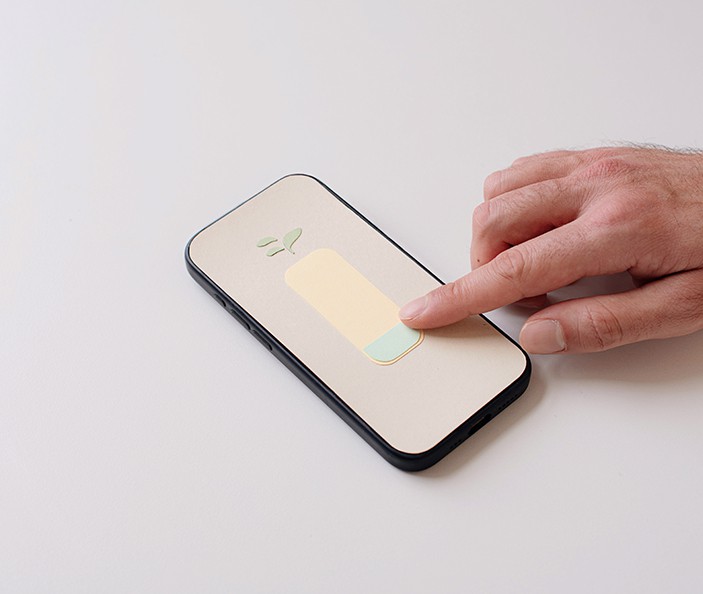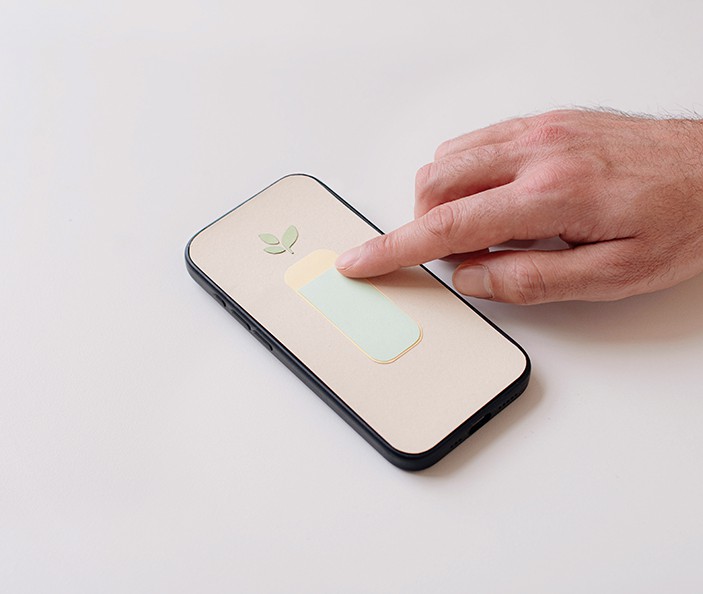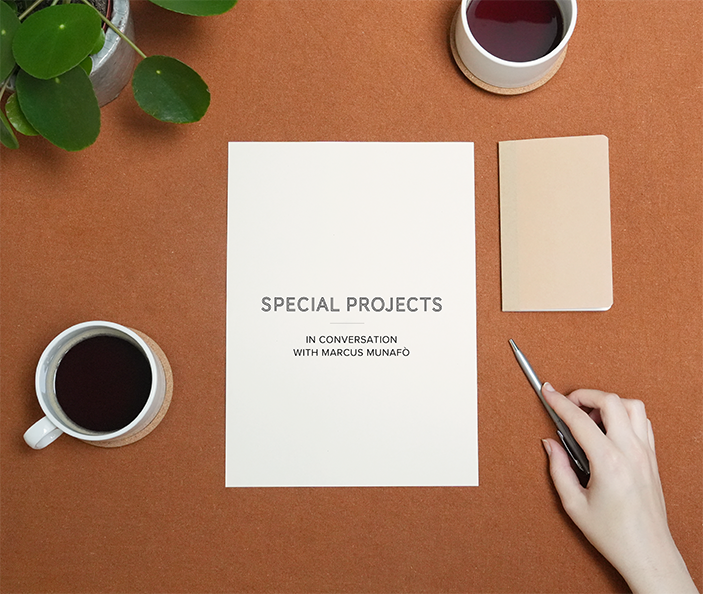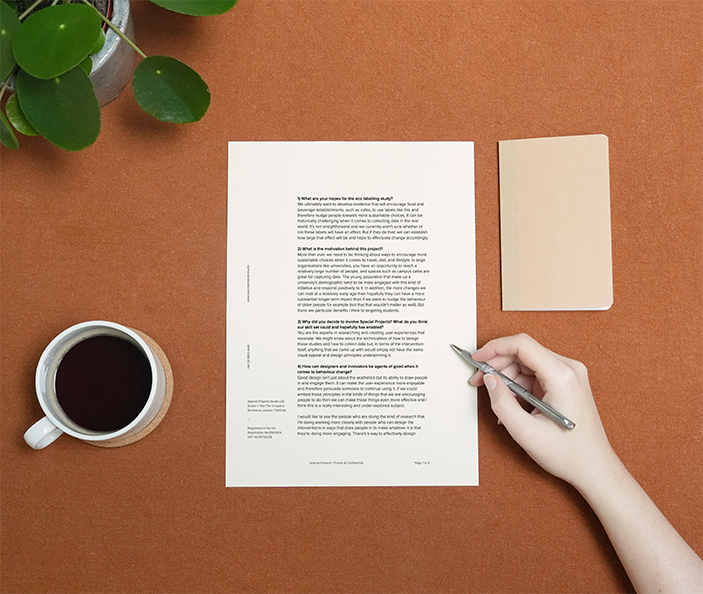How Digital Design Can Shape Our Environment
In the realm of sustainable design, the focus has long been on physical products - reducing plastic, minimising materials, and promoting recyclability. This is admirable and necessary, however, there's a silent environmental player often overlooked: the digital interface.
Here at Special Projects we have spent the last decade exploring the transformative power of digital design and this article aims to shed light on its potential to drive positive environmental change. From reducing data consumption and breathing new life into existing technology to enhancing sustainable experiences and empowering eco-friendly choices, we explore the ways in which digital design can contribute to a greener, more sustainable future.
Reducing Data Consumption
In the current landscape, the carbon footprint of our gadgets accounts for 3.7% of global greenhouse emissions (BBC, 2020), demonstrating an increasing demand for the tech industry to better understand and address its impact on the environment.
Pioneering companies have designed websites with carbon principles, contributing to the growing internet eco-awareness. A good example is the website of one of our favourite design studios, Formafantasma which features a low-data design, reducing the energy needed to power it. The most well-known example is LowTech magazine. Other examples are well illustrated by our friend Matt Webin this post.
Imagine if every mobile phone’s interface prioritised energy efficiency as well as minimised data consumption. The cumulative effect on data farms worldwide could be staggering, leading to substantial energy savings.
We have created a few experiments in partnership with Google to empower people to take a break from their devices, and therefore reduce data consumption. Our Paper Phone project is an experimental open-source app which helps you have a break away from the digital world by printing a personal booklet of the information you’ll need that day. Printing one page per day would produce approximately 10g of CO2 in a year. In contrast, using a mobile device for one hour a day produces 1.25 Tonnes of CO2 at the end of the year, taking into account network and server infrastructure energy requirements.
A few people and brands are deploying ideas to encourage us to be more environmentally minded by using not less but “better” electricity. Should I Bake is a website that informs us on the source of Britain's electricity, so that we can bake when more than a third of it is coming from wind, solar and hydro power. Apple’s Clean Energy Charging initiative helps your iPhone “to reduce its carbon footprint by selectively charging when lower carbon-emission electricity is available”.
Here at Special Projects we have spent the last decade exploring the transformative power of digital design and this article aims to shed light on its potential to drive positive environmental change. From reducing data consumption and breathing new life into existing technology to enhancing sustainable experiences and empowering eco-friendly choices, we explore the ways in which digital design can contribute to a greener, more sustainable future.
In the current landscape, the carbon footprint of our gadgets accounts for 3.7% of global greenhouse emissions (BBC, 2020), demonstrating an increasing demand for the tech industry to better understand and address its impact on the environment.
Pioneering companies have designed websites with carbon principles, contributing to the growing internet eco-awareness. A good example is the website of one of our favourite design studios, Formafantasma which features a low-data design, reducing the energy needed to power it. The most well-known example is LowTech magazine. Other examples are well illustrated by our friend Matt Webin this post.
Imagine if every mobile phone’s interface prioritised energy efficiency as well as minimised data consumption. The cumulative effect on data farms worldwide could be staggering, leading to substantial energy savings.
We have created a few experiments in partnership with Google to empower people to take a break from their devices, and therefore reduce data consumption. Our Paper Phone project is an experimental open-source app which helps you have a break away from the digital world by printing a personal booklet of the information you’ll need that day. Printing one page per day would produce approximately 10g of CO2 in a year. In contrast, using a mobile device for one hour a day produces 1.25 Tonnes of CO2 at the end of the year, taking into account network and server infrastructure energy requirements.
A few people and brands are deploying ideas to encourage us to be more environmentally minded by using not less but “better” electricity. Should I Bake is a website that informs us on the source of Britain's electricity, so that we can bake when more than a third of it is coming from wind, solar and hydro power. Apple’s Clean Energy Charging initiative helps your iPhone “to reduce its carbon footprint by selectively charging when lower carbon-emission electricity is available”.
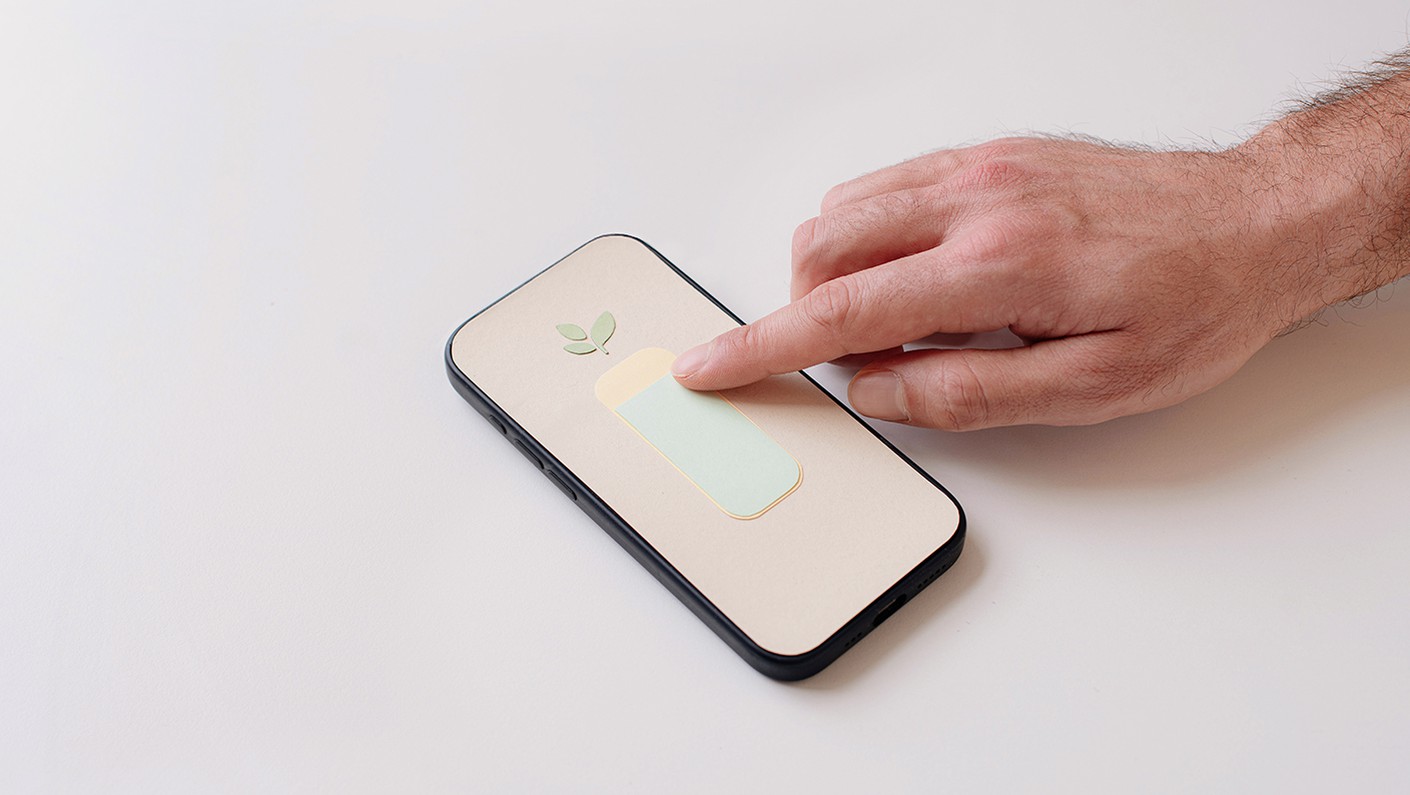
Another approach to encourage sustainable innovation is to explore the use of existing hardware wherever possible, revitalising it with a fresh user interface (UI).
In our Moving Buttons project we reimagined the supermarket self-checkout during the COVID era. An idea for a new touchscreen interface moves the buttons around intelligently to ensure you always touch a clean surface when using a public touchscreen. Using only a software update, it allows up to 50 people to use a touchscreen without touching the same spot as someone else, making interactions for both customers and staff cleaner and safer.Instead of designing and manufacturing a new touchless check out device, we suggest achieving a similar result by reinventing the touch screen’s UI.
In embracing the concept of revitalising technology, it's worth pondering the transformative potential of user interfaces (UI) as instant refreshers for existing hardware. Think of your device's UI as a magic wand that can breathe new life into familiar technology, sparing it from the fate of becoming obsolete and contributing to electronic waste.
This paradigm shift invites us to view UI not merely as a tool for convenience but as a sustainable force that can refresh and update our technology, reducing unnecessary waste in the process.
Digital interfaces with a sustainability mindset hold the incredible potential to enhance a product, even if it's less convenient than its less sustainable counterpart.
Take electric vehicles as a prime example. Petrol-fuelled cars offer the convenience of refuelling in seconds, whereas electric cars require users to wait for half an hour or more. Recently, we conducted a study on electric vehicles for a leading electric vehicles manufacturer with the objective of reinventing and enhancing the charging experience solely through UI adjustments. While the default setup for built-in screens prioritises entertainment, our vision aimed to craft a new user experience that champions sustainable and healthy behaviours. The redesigned UI has the potential to motivate users to engage in activities that enhance their well-being, turning charging stations into hubs of positive action. This transformation may attract more individuals to consider electric vehicles, despite the longer charging times involved.
Digital interfaces have a remarkable ability to make sustainable experiences better, to upgrade the ordinary to something extraordinary, to transform an inconvenience into a joy.
Sustainability-minded digital interfaces undoubtedly harbour the potential to induce behavioural change and facilitate well-informed, eco-conscious decisions. Our latest project, Eco Lenses, explores five digital solutions to promote more sustainable food choices.
As designers, looking ahead means understanding how powerful digital design is in shaping sustainable behaviours. This could be by using less data, giving a fresh spin to existing technology, improving the experience of eco-friendly products, or encouraging users to make greener choices. The options are wide open.
Digital interfaces should be attuned to their usage context, acknowledging their influential role in shaping it, holds the power to contribute to a greener, more sustainable future. By designing with sustainability in mind, we can unlock a wealth of possibilities and pave the way for a more eco-friendly tomorrow.



